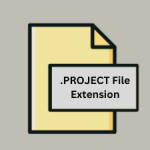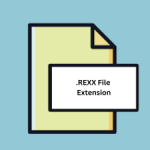.SLOGO File Extension

StarLogo Project File
| Developer | MIT |
| Popularity | |
| Category | Developer Files |
| Format | .SLOGO |
| Cross Platform | Update Soon |
What is an SLOGO file?
The .SLOGO file extension is primarily associated with StarLogo, a specialized programming language and modeling environment developed by MIT’s Media Lab.
StarLogo enables users to create simulations and models, particularly focusing on emergent phenomena in complex systems.
These simulations often simulate behaviors observed in nature or societal interactions, providing a powerful tool for educational purposes and scientific exploration.
More Information.
The development of StarLogo stemmed from the desire to democratize access to simulation modeling tools.
Traditional simulation software often required significant expertise in programming and mathematics, limiting its accessibility to a specialized audience.
StarLogo sought to bridge this gap by providing a platform that was intuitive enough for students and educators while still powerful enough for researchers.
The .SLOGO file extension served as the container for these simulations, storing the code, parameters, and configuration settings necessary to recreate the simulation environment.
Initially, StarLogo was used primarily in educational settings, allowing students to explore concepts in fields such as biology, ecology, economics, and sociology through hands-on experimentation.
Origin Of This File.
StarLogo, the platform from which the .SLOGO file extension originates, was conceived in the 1990s as a project led by Mitchel Resnick and colleagues at the MIT Media Lab.
The aim was to develop a tool that would allow users to easily create simulations of complex systems and explore emergent behavior.
Drawing inspiration from the Logo programming language, StarLogo provided a user-friendly environment for programming multi-agent simulations.
File Structure Technical Specification.
The .SLOGO file extension typically consists of a structured format that includes:
- Code: The core logic of the simulation, written in the StarLogo programming language. This code defines the behavior of individual agents, their interactions, and the rules governing the simulation.
- Configuration Settings: Parameters such as simulation duration, agent properties, environment characteristics, and visualization options are stored within the .SLOGO file, allowing users to customize and fine-tune their simulations.
- Assets: Graphics, sounds, and other media assets used within the simulation may also be included within the .SLOGO file or referenced externally.
- Metadata: Information about the simulation, such as its title, author, creation date, and description, may be embedded within the file for reference.
The StarLogo programming language is based on the concept of “turtles” and “patches,” where agents (turtles) interact with and modify their environment (patches) based on predefined rules and behaviors.
How to Convert the File?
Converting .SLOGO files to other formats may be challenging due to the specialized nature of the StarLogo environment. Some methods may be employed:
- Export to Common Formats: Some versions of StarLogo may offer the ability to export simulations to more common formats such as CSV (Comma-Separated Values) or XML (eXtensible Markup Language), which can then be imported into other software tools for further analysis or visualization.
- Custom Scripts or Tools: Custom scripts or tools may be developed to parse .SLOGO files and convert them to other formats, although this approach may require programming expertise and an understanding of the .SLOGO file structure.
Advantages And Disadvantages.
Advantages:
- Educational Utility: It provides a user-friendly environment for students to explore complex systems and emergent behavior, making it an invaluable tool for educational purposes.
- Interdisciplinary Applications: Simulations created using StarLogo and the .SLOGO file extension can span various disciplines, including biology, ecology, economics, sociology, and more, fostering interdisciplinary learning and research.
- Accessibility: By abstracting away the complexities of traditional simulation programming, StarLogo makes simulation modeling accessible to a broader audience, including students and educators with limited programming experience.
Disadvantages:
- Scope: While StarLogo and the .SLOGO file extensions are well-suited for certain types of simulations, they may not be suitable for more complex or specialized modeling tasks that require advanced features or performance optimizations.
- Learning Curve: While StarLogo aims to simplify the process of creating simulations, there is still a learning curve involved, particularly for users who are new to programming or simulation modeling concepts.
- Compatibility: The .SLOGO file extension is specific to the StarLogo environment, which may limit interoperability with other simulation platforms or software tools.
How to Open SLOGO?
Open In Windows
- Download and install StarLogo or its latest version compatible with your Windows operating system from the official website or trusted sources.
- Once installed, launch StarLogo.
- In StarLogo, navigate to the “File” menu and select “Open” or use the keyboard shortcut Ctrl + O.
- Locate the .SLOGO file you wish to open, select it, and click “Open.”
Open In Linux
- Install Wine, a compatibility layer that allows you to run Windows applications on Linux.
- Download the Windows version of StarLogo from the official website or trusted sources.
- Right-click on the downloaded StarLogo installer, select “Open With Wine Windows Program Loader,” and follow the installation instructions.
- Once installed, launch StarLogo using Wine.
- Follow the same steps as opening in Windows to open .SLOGO files.
Open In MAC
- Currently, StarLogo does not have an official version for macOS. You can try running StarLogo using compatibility layers like Wine or by using virtualization software like Parallels Desktop or VMware Fusion to run Windows on your macOS system.
- Install the Windows version of StarLogo using the method suitable for your chosen compatibility solution.
- Follow the same steps as opening in Windows to open .SLOGO files.
Open In Android
- As of now, there is no dedicated version of StarLogo for Android.
- You may explore alternative simulation modeling apps available on the Google Play Store, which support similar functionalities or allow you to import/export .SLOGO files if applicable.
- Transfer the .SLOGO files to your Android device using a file transfer method (USB cable, cloud storage, email, etc.).
- Open the compatible app on your Android device and import the .SLOGO files following the app’s instructions.
Open In IOS
- Similar to Android, there isn’t a native StarLogo app for iOS devices.
- Explore simulation modeling apps available on the App Store that support similar functionalities or allow importing/exporting of .SLOGO files if applicable.
- Transfer the .SLOGO files to your iOS device using a file transfer method (cloud storage, email, etc.).
- Open the compatible app on your iOS device and import the .SLOGO files following the app’s instructions.
Open in Others
- For other operating systems not covered above, you may explore running StarLogo using compatibility layers, virtualization software, or alternative simulation modeling software available for those platforms.
- Follow similar steps as mentioned above, adapting them to the specific compatibility solution or software available for your operating system.












